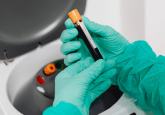Back to the bench: post-summer reading list for bioanalysts

With autumn edging us into the cozier months, we’ve put together some of the most popular journal articles that were published over the summer. If you didn’t get the chance to stick your nose into some of the latest research while basking in some holiday sun, you can catch up while curled up with a cuppa.
![]()
Researchers developed and optimized a solid-phase extraction (SPE) method combined with LC–MS analysis to quantify lipid-conjugated siRNA molecules, which are challenging to analyze due to their increased hydrophobicity from fatty acid conjugation. Using a stable isotope labeled internal standard (SILIS), they achieved high accuracy and precision (±5%) in measuring these therapeutics in mouse plasma and tissues, demonstrating that this approach could become standard practice for siRNA bioanalysis.
The ICH M10 guideline establishes a global framework for bioanalytical method validation in regulatory studies, but recognizes that not all studies require the same validation rigor, allowing for scientific judgment in applying leaner, context-driven approaches for early-stage development or internal decision-making studies. This paper presents a decision-making flowchart and parameter table based on European Bioanalysis Forum recommendations to guide the appropriate application of a context-of-use validation approach, advocating for continued dialogue with regulators to support a modernized, risk-based framework that maintains scientific integrity while being proportionate to the assay’s intended purpose.
![]()
The European Bioanalysis Forum challenges the standard practice of using blank authentic matrices in bioanalytical method validation, presenting experimental data that supports using surrogate matrices in preclinical immunoassays as a scientifically valid alternative that aligns with ethical 3Rs principles (replacement, reduction and refinement). The findings demonstrate that surrogate matrices can maintain data quality and integrity while significantly reducing reliance on authentic animal matrices, advocating for regulatory guidelines like ICH M10 to be revised to more widely accept this approach without compromising scientific rigor.
The European Bioanalysis Forum has identified widespread misclassification of non-diagnostic research assays (pharmacokinetic, anti-drug antibody and biomarker assays) under the EU’s In Vitro Diagnostic Regulation, despite these assays being intended for early clinical development rather than patient management, leading to unnecessary clinical trial delays and regulatory burden. This paper proposes solutions including clearer regulatory guidance to exempt non-commercial, non-diagnostic research assays from IVD Regulation requirements, along with improved stakeholder education and coordinated regulatory dialogue to preserve patient protection while enabling efficient clinical research.
5. Special consideration: commentary on the 2025 FDA Bioanalytical Method Validation for Biomarkers
![]() The FDA’s new 2025 Bioanalytical Method Validation for Biomarkers (BMVB) guidance creates a regulatory gap by directing biomarker assay validation to use ICH M10 as a starting point, despite ICH M10 explicitly excluding biomarkers from its scope, leaving no clear guidance for appropriate biomarker validation that supports context-of-use requirements. The authors advocate for using the 2019 Critical Path Institute’s Points to Consider document, which was developed with FDA input and provides a fit-for-purpose framework based on context-of-use principles, as the most appropriate current resource for biomarker assay validation until more comprehensive guidance is developed.
The FDA’s new 2025 Bioanalytical Method Validation for Biomarkers (BMVB) guidance creates a regulatory gap by directing biomarker assay validation to use ICH M10 as a starting point, despite ICH M10 explicitly excluding biomarkers from its scope, leaving no clear guidance for appropriate biomarker validation that supports context-of-use requirements. The authors advocate for using the 2019 Critical Path Institute’s Points to Consider document, which was developed with FDA input and provides a fit-for-purpose framework based on context-of-use principles, as the most appropriate current resource for biomarker assay validation until more comprehensive guidance is developed.






